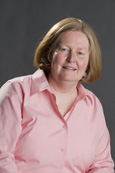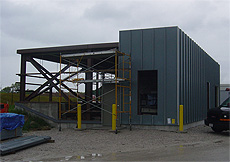Getting ready for the future
 |
Elaine McCluskey |
Elaine McCluskey, project manager of the Main Injector Neutrino Upgrade, wrote this week's column.
The laboratory has just completed another major shutdown of the Fermilab accelerator complex, and the Tevatron is producing collisions again.
During the shutdown, Fermilab finished the first phase of an important civil construction job in the Main Injector that will erect two new service buildings. The construction laid the groundwork for a new gap clearing kicker system and created connections between the accelerator tunnel and the future service buildings. When complete, the kicker system will help reduce beam losses in the Main Injector and enable Fermilab to provide higher-intensity particle beams for experiments such as NOvA. The service buildings will house power supplies and cooling equipment for beam operation.
The Main Injector Neutrino Upgrade work included the excavation and backfilling of the soil above the Main Injector tunnel and drilling holes through the concrete ceiling. Task managers closely coordinated this construction work with the shutdown work inside the tunnel to ensure that everyone could work safely and get their tasks done in the correct sequence.
Radiation safety received attention as well. When the Main Injector is in operation, its proton beam produces radiation such as X-rays. Concrete walls and shielding prevent any radiation from escaping the tunnel. When the beam is off, people can work in the tunnel, but low levels of radiation remain for some time. Hence we required the construction workers to complete the Fermilab Radiation Worker training. For additional protection, AD radiation technicians monitored all materials in the construction area for radiation.
The installation of 30 conduits in the roof of the Main Injector tunnel presented the opportunity for water to drip into the tunnel. The design work by our FESS engineering staff and the careful application of sealant have kept the tunnel dry and our equipment safe.
Best of all, our subcontractors, from Whittaker Excavating, of Earlville, Illinois, have had no injuries or lost workdays. They finished the first phase of the construction on time and the Main Injector beam is back up and running. This is a tribute to the many people across the laboratory who coordinated the work, protected the accelerator systems and restored them for on-time operations.
Whittaker is now completing the service buildings and installing mechanical and electrical services. We expect this work to be complete by the end of December.
 |
| One of the two MINU service buildings, named MI39. |
|